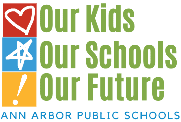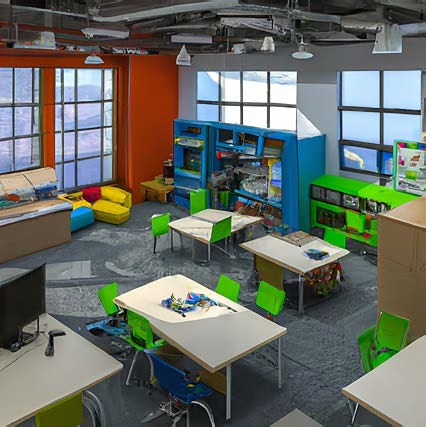Elementary students shared their vision for 21st-century schools with architects and designers through AI generated images.
Ann Arbor Public Schools’ goal is to create 21st-century schools that center the student learning experience. The district has engaged an array of experts working together to make this vision come to life. Most communities and school districts typically engage administrators, school board members, parents, and teachers in the process of developing new schools. Working with renowned educational experts at Fielding International, AAPS has taken a new approach, and reached out to students across the district for their input, using new tools and technology to assist in developing new school buildings. Architects and engineers at Stantec have already incorporated feedback from these student engagement sessions into the designs of Logan Elementary and Thurston Elementary.
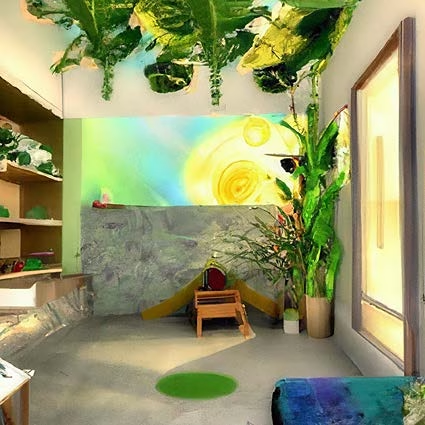
Top Five Takeaways From This Article on Student Engagement in the Design Process
- Learner-centered environments are improved by student input for effective design.
- Because of the challenges inherent in engaging young students in design conversations, design professionals must employ creative solutions and leverage the latest technology to gather the most effective input.
- AI is one of the engagement tools that Fielding International used to successfully solicit student input.
- Using student feedback helps to create welcoming spaces for all students using Universal Design principles.
- Ann Arbor Public Schools is planning for the future by designing school buildings that will serve learner-centered education for decades into the future.
Learner-Centered Environments
Traditional school design has prioritized instructional or administrative perspectives over the experience of the student. Research has shown that standardized instruction is failing our young people and that student-centered learning produces better overall outcomes. In line with these findings, Ann Arbor Public Schools’ goal is to incorporate more student-centered learning by creating schools for the 21st century. By including student input into the design of learning environments, schools foster a greater sense of ownership and engagement from students. Understanding how students interact with their environment—whether through seating choices, lighting preferences, or collaborative spaces—designers can create schools that are adaptive to students needs and facilitate academic success.
Engaging Students in the Design Process
Designing a 21st-century school is a major undertaking. The design team for each school project is over 100 members that include experts in education, building materials, finishes, engineering, internal systems, construction documentation, and green building certifications such as the Collaborative for High Performing Schools (CHPS) requirements. “We are paying attention to every detail that is uniquely specialized toward creating ideal learning environments” explained Lindsay Woods, Senior Project Manager for Stantec.
Student input provides direct insight into their needs in a contemporary learning environment, and using student feedback reinforces the idea that their perspectives are valued and influential. However, engaging students in the design process can be challenging. Young people may not have the language to be able to describe their needs and wants in ways that translate well into the design process.
Fielding International developed a few tools for the engagement process to help the design team work with elementary age students and receive valuable feedback. “As design professionals, we often don’t get the opportunity to be as engaged with the end user. We have conversations with the facilities team, teachers, and staff, but engaging students with Fielding’s tools helped bridge generational gaps,” Woods shared. “We used these tools to understand what students are feeling and what they want in their spaces.”
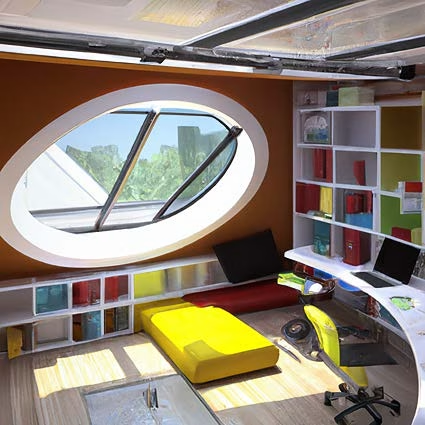
Using AI as an Engagement Tool
AI is a top conversation in the world today, with organizations of every stripe seeking to find productive ways to put the technology to use. AAPS and Fielding recognized a creative way to leverage AI to engage elementary age students and solicit their feedback and input into in the development of 21st-century schools. Fielding trained an image-generating AI tool and set up access for groups of 20–30 fourth and fifth grade students at each school to share their vision for an ideal learning environment.
Students interacted with AI by responding to prompts, which generated images of classrooms based on their preferences. Fielding reported that over 60% of students who participated in the AI engagement exercise opted to create a “nook” as their ideal learning environment, while 23% designed classrooms and 17% designed common spaces. “Tucked away,” “cozy,” and “calming” were the most used words in response to the prompts provided. Using this approach gave students an interactive way to show the design team their vision for the look and feel of a learning environment suited to their needs. “Although there is a lot of research on student needs for positive learning environments, this exercise helped match the research to the reality,” Woods shared.
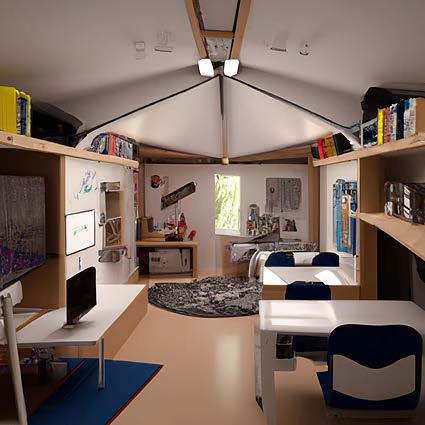
AAPS Assistant Superintendent of Physical Properties & Capital Program Bernerd Rice witnessed student engagements firsthand. “Watching the student’s excitement as their AI choices displayed an environment on the screen was a privilege. For the student to see their vision come to life and become a piece of the design process, that Design teams take into account, is a valuable piece of student input.”
Welcoming Spaces through Universal Design
At the intersection of research and the practical application of learner-centered principles is Universal Design. “Universal Design” is the concept developed by American architect Ron Mace of making spaces, products, and systems easy for anyone to use, regardless of their ability. The goal of Universal Design is to make the standard use of a space, product or system automatically accessible to as many people as possible. While the Americans with Disabilities Act (ADA) requires that new buildings include adaptations such as a ramp, “Universal Design goes beyond ADA,” explained Woods. “The idea is that everyone can participate, everyone has pathways and choices, and everyone can get where they need to go.”
The district’s goal is to incorporate Universal Design throughout the new school buildings. Rather than imposing a one-size-fits-all approach, Universal Design ensures that all students—regardless of ability or learning style—can navigate and utilize school spaces comfortably. By prioritizing accessibility, flexibility, and sensory considerations, AAPS’ 21st-century schools can accommodate diverse learning needs. The spaces incorporate features such as gently graded pathways, varied seating options, adaptable lighting, and quiet, calming spaces for focus. Through the input from students, architects have a clearer idea of how to create environments that foster engagement, inclusivity, and a sense of belonging for every learner, reinforcing the value of student-centered design.
Future Ready Schools for the 21st Century, and Beyond.
The 21st-century school buildings in Ann Arbor Public Schools are designed with long-term adaptability in mind, allowing modifications without extensive renovations, supporting evolving educational methods. “We’re building for 50-100 years ahead,” said Woods, “designing buildings ready to accept change. These schools will have an inherent flexibility to how spaces can be used, and some inherent flexibility in how AAPS will be able to change the spaces as their needs change.”
Ann Arbor Public Schools is taking a forward-thinking approach to school design, ensuring that its buildings remain centers of learning for decades to come. By integrating flexible learning spaces, future-ready infrastructure, and student-centered design principles, the district is creating environments that will evolve with changing educational needs. Adaptive layouts, multipurpose rooms, and mobile technology integration allow these 21st-century schools to accommodate shifts in learning, teaching, technology, and preferences over time. This long-term vision reflects a commitment to providing innovative, engaging learning spaces that support both current and future students. Through these practices, Ann Arbor Public Schools is developing an educational landscape that will stand the test of time.
(Learning environment AI images created by Thurston Elementary School students.)
